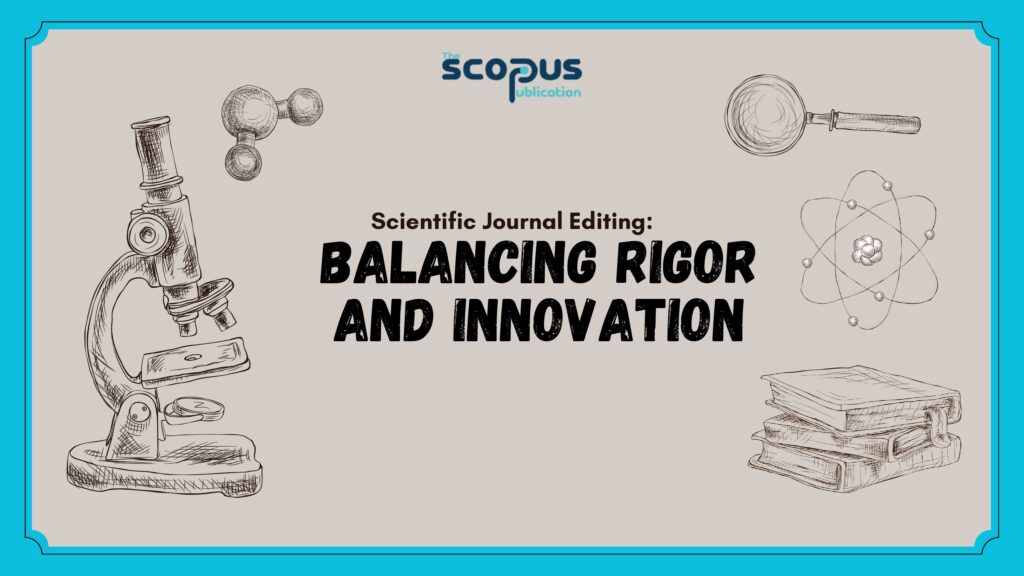Publishing in a scientific journal is a milestone for any researcher. It represents the culmination of hard work, critical analysis and valuable discoveries. However, getting a manuscript familiar is not a smooth project. It calls for thorough scientific proofreading, careful structuring and adherence to the journal’s guidelines. A scientific journal editor performs a critical function in making sure that research meets excessive academic requirements whilst permitting room for innovation.
In this blog, we are able to discover the obligations of a scientific journal editor, the significance of English editing and proofreading and the way journal guide services can help researchers decorate their work for a hit publication.
What Does a Scientific Journal Editor Do?
A scientific journal editor is accountable for maintaining the credibility and quality of published research. They ensure that every manuscript undergoes a rigorous review process before being accepted. Their function includes:
1. Initial Review of Manuscripts
Before sending a paper for peer review editors conduct an initial screening to test whether the manuscript aligns with the journal’s recognition, scope and ethical guidelines. If a paper lacks readability, originality or the right formatting, it may be rejected before peer review.
2. Overseeing the Peer Review Process
The peer review procedure entails subject matter experts evaluating the research. The scientific journal editor coordinates this technique, selecting certified reviewers, dealing with their comments and ensuring a fair overview procedure.
3. Scientific Proofreading and Quality Control
Editors test for grammar mistakes, logical inconsistencies and structural flaws. A paper that is edited well makes sure that research findings are communicated successfully without ambiguity.
4. Encouraging Innovation While Maintaining Standards
Scientific journals must balance strict academic standards with fresh research ideas. Editors need to understand and guide revolutionary studies while ensuring accuracy, reliability and adherence to scientific strategies.
The Importance of Scientific Proofreading
Even groundbreaking studies can be rejected because of poor language quality. This is why scientific proofreading is important before submission. Errors in grammar, punctuation and sentence structure can affect the clarity and credibility.
Why Scientific Proofreading Matters:
- Ensures grammatical accuracy and consistency.
- Eliminates typos and awkward sentence structures.
- Improves clarity, making research easy to apprehend.
- Aligns formatting with journal guidelines.
Many researchers turn to journal publication services for expert scientific proofreading to enhance their possibilities of acceptance.
How Journal Publication Services Help Researchers
Submitting a manuscript to a high impact journal is a bit complex procedure. Researchers often struggle with the formatting guidelines, referencing patterns and structuring their findings successfully. A journal publication service gives expert assistance in refining a manuscript to meet the journal requirements.
Key Services Offered by Journal Publication Services:
- Editing and Proofreading: Ensuring the manuscript is mistakes free and well structured.
- Formatting and Style Guide Compliance: Aligning the paper with journal guidelines.
- Plagiarism Check: Detecting unintended plagiarism and improving originality.
- Manuscript Submission Support: Guiding researchers in filing their work successfully.
With the help of a journal publication service, authors can focus on their research even as experts take care of the technical aspects of publishing.
The Role of English Editing and Proofreading in Scientific Writing
Many high-impact journals require submissions in English which can be difficult for non-native speakers. Even if the research is treasured poor language can lead to rejection. This is where English editing and proofreading emerge as crucial.
How English Editing and Proofreading Improve Research Papers:
- Enhances clarity with the aid of refining sentence strutures.
- Corrects grammar, punctuation and word preference.
- Improves the logical flow of ideas.
- Helps non-native English speakers present research more effectively.
Journals often reject papers with doubtful language, so making an investment in English editing and proofreading increases the probability of publication success.
Common Challenges Faced by Researchers During Publication
Publishing a research paper isn’t pretty much undertaking a have a look at—it involves numerous challenges:
1. Strict Journal Guidelines
Many journals have the strict formatting, referencing and structural requirements. Failing to comply with them can result in the rejection.
2. Language Barriers
Non-native English speakers often strugle with clarity, grammar and technical terms, affecting the quality of their papers.
3. High Rejection Rates
Many top journals reject a massive range of submissions because of loss of originality, negative structure or inadequate data analysis.
4. Time Constraints
Researchers have tight deadlines and may not have the time to thoroughly edit their manuscripts. Professional journal publication services help by handling the editing procedure effectively.
Balancing Rigor and Innovation in Scientific Publishing
One of the largest demanding situations for scientific journal editors is balancing educational rigor with the want for innovation. While research should meet strict requirements, it must additionally inspire fresh perspectives and discoveries.
- Ensuring High-Quality Research: Editors have to clear out vulnerable or inaccurate studies even allowing space for brand new findings.
- Avoiding Bias in Peer Review: A fair peer-overview process guarantees that revolutionary ideas are not dismissed certainly due to the fact they challenge current theories.
- Maintaining Ethical Integrity: Plagiarism, data fabrication and conflicts of interest should be averted to uphold journal credibility.
A well-functioning editorial crew guarantees that each hooked up and rising researchers have identical possibilities to contribute to scientific development.
Tips for Researchers to Improve Their Manuscripts
To grow the possibilities of journal acceptance, researchers must follow these best practices:
- Follow Submission Guidelines: Carefully study the journal’s instructions earlier than submitting.
- Use Clear and Concise Language: Avoid overly complicated sentences and technical jargon.
- Seek Professional Proofreading: Use English modifying and proofreading services for higher clarity.
- Address Reviewer Feedback Promptly: If revisions are asked, reply with well-dependent updates.
- Double-Check Formatting and References: Ensure proper citation style and manuscript structure.
Conclusion
Publishing studies in a scientific journal is a rigorous manner, requiring careful modifying, proofreading and adherence to guidelines. A scientific journal editor ensures that manuscripts meet high academic standards while supporting innovation.
With professional scientific proofreading, journal publication services and English editing and proofreading, researchers can refine their work for better readability and acceptance.
For any researcher looking to publish effectively for them balancing accuracy with creativity is fundamental. By ensuring excellent writing and clean presentation, scientific journals continue to serve as trusted sources of knowledge and discovery.


